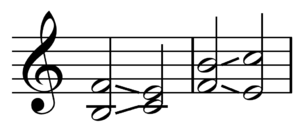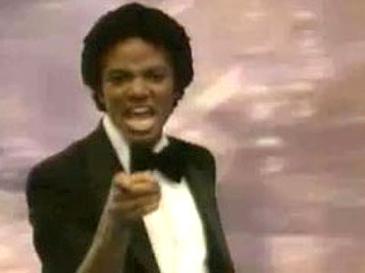I’ve picked up some new guitar students lately, so I’m once again doing a lot of explaining what a tritone is and why people should care. Whenever I find myself explaining something a lot, I like to encapsulate it as a blog post. So here we go.
A tritone is the interval between the notes C and F-sharp. It’s also known as the flat fifth or sharp fourth. It’s two minor thirds, three whole steps, six half steps, or half an octave. On the piano, count six keys up or down. On guitar, count six frets.
The tritone is the heart of the entire western tonal system. The clearest way to define the key center of a piece of music is to look at how tritones create tension and resolve it. Tritones are also central to the sound of the blues and blues tonality, which form the basis of most of the music I like.
Tritones are irrational
Music is really just a performative version of math, specifically, the math of harmonic oscillators. Pitches are another name for the frequencies of the oscillators, and harmonies are ratios between the frequencies. In the equal temperament system, the ratio of the frequencies in a tritone is one to the square root of two.
The intervals that we in the western world consider to be most pleasing and consonant arise from the lower harmonics of vibrating strings, which are simple ratios of whole numbers. So for instance, the ratio of the pitches making up a perfect fifth is three to two. The ratio of a major third is four to five. The more complex the ratio, the more dissonant the sound is.
In the modern western tuning system, tritones are based on the ratio of one to the square root of two. The square root of two is an irrational number. When you hear a tritone, your ear can tell that something weird is going on. (The pedants out there might well interject that in equal temperament, all of the intervals are irrational. This true, but our ears tend to correct them to the closest ratio of small whole numbers. We can’t do that with the tritone.)
A few fun facts about the square root of two. You can express it as an infinitely nested repeating fraction like so:
You can also express it like so:
Fans of imaginary numbers will be geekily delighted to learn that you can express the square root of two as:
Isn’t math fun?
Tritones define keys
In the western classical tradition and the pop descending from it, the tritone serves a specific purpose: it defines what key you’re in. Every major scale has a tritone between its fourth and seventh notes. In the key of C, the tritone lies between F and B. The dominant chord G7 includes this tritone, giving the chord a feeling of tension and suspense.
You resolve the tension in G7 by changing the notes in the tritone to adjacent scale degrees that feel more settled. Think of the tritone as a question, and the resolved tonic chord as the answer. It’s a relief to feel the F and B in G7 shifting to the E and C in C major.
 Tritones don’t have to resolve
Tritones don’t have to resolve
Blues, jazz and other African-flavored American music all use chords with tritones in them both as questions and answers. In a blues tune, all the chords might be dominant. A blues tune in C can use C7 as its home base. Plenty of blues and jazz tunes use a single dominant seventh chord as their only chord.
The Mel Bay book Chord And Progressions For Jazz And Popular Guitar gives the hip suggestion of accompanying blues tunes using nothing but tritones. Blues and jazz commonly use tritones in their melodies too. In addition to the one between the third and seventh of a dominant chord, there’s also the one between the root and flat fifth (a feature of the blues scale), and the one between the flat third and natural sixth.
Sixties jazz gets even more tritone-heavy through use of the melodic minor scale and its modes. These scales get their dark and mysterious vibe from their two tritones. In C melodic minor, the tritones are between Eb and A, and between F and B.
Jazz composers are especially fond of prominently placed tritones. Here are three examples of tunes that begin their melodies with them:
- “Blue 7” by Sonny Rollins
- “Sid’s Ahead” by Miles Davis
- “Raise Four” by Thelonious Monk
Dominant chords share their third-seventh tritone with the dominant chord whose root is a tritone away. G7 and Db7 both contain B and F. Jazz musicians will freely substitute G7 and Db7 for each other to liven up a pop tune’s chord changes. Instead of playing D-7, G7, C, a jazz guitarist or pianist will frequently play D-7, Db7, C. Then you get that nice chromatic descending bassline. Hip! For even more happening results, try the A-flat melodic minor scale over the Db7.
Tritones in pop
Blues and jazz aren’t the cultural force they once were, but the tritone is alive and well in America’s musical culture. Michael Jackson kicks off the vocal melody to “Don’t Stop ‘Til You Get Enough” with the tritone between D-sharp and A.
Used in a bassline, tritone leaps give a feeling of being wrong-footed, like when you stumble on a staircase because you’ve lost track of the number of steps. The chorus of “Sir Duke” by Stevie Wonder uses a tritone leap in the bass. It’s on the line “You can feel it all over.”
On the word “you” the chord is the tonic, B major. On the word “over,” the chord changes to a very unexpected F minor. Then Stevie moves back into familiar territory with a tamer C-sharp minor to F#7.
“Woo-Hah!!” by Busta Rhymes uses a similar tritone leap in the bass through the entire song. In the looped sample, the bass jumps alarmingly from D-flat to G, before reassuringly going to A-flat and landing back on D-flat. The song starts a minute in:
Finally, the Simpsons theme song is loaded with tritone action, both in the melody and its accompaniment.
The bassline throughout is root-tritone-root-tritone, a demented twist on the standard marching-band pattern, root-fifth-root-fifth.
Come on music nerds, I know you have more examples. Let’s hear them in the comments.






Correction required!
In C melodic minor, the tritones are between C and Eb, and between F and B.
to
In C melodic minor, the tritones are between A and Eb, and between F and B.
Don’t forget about “One-Winged Angel” from the FINAL FANTASY VII soundtrack, which opens on timpani and loud marcato tritone chords (E and Bb).
also, the march of the winkies from wizard of oz, or at least metallica’s quotation of it:
i listened to the original from the wizard of oz and it (disappointingly) sounds more like a perfect fifth to me.
lastly, i’m in a band called monkey (not the san francisco ska band), which is in many ways an exercise in trying to cram as many tritones into the smallest space possible.
How could I have spaced on the intro to “Purple Haze” — great pickup.
well, there’s the obvious ones:
black sabbath – black sabbath:
jimi hendrix – purple haze:
(the first 5 seconds).